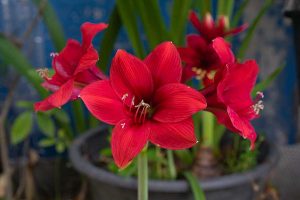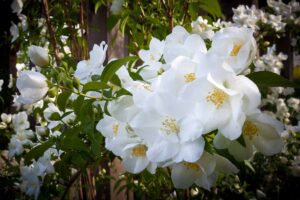Orchids are undeniably fascinating, from their unusual flowers to the strange swollen stems and roots. These swollen stems, which are found on many – but not all – species are known as pseudobulbs.
Understanding these pseudobulbs and how to maintain them is a key element in caring for these types of orchids.
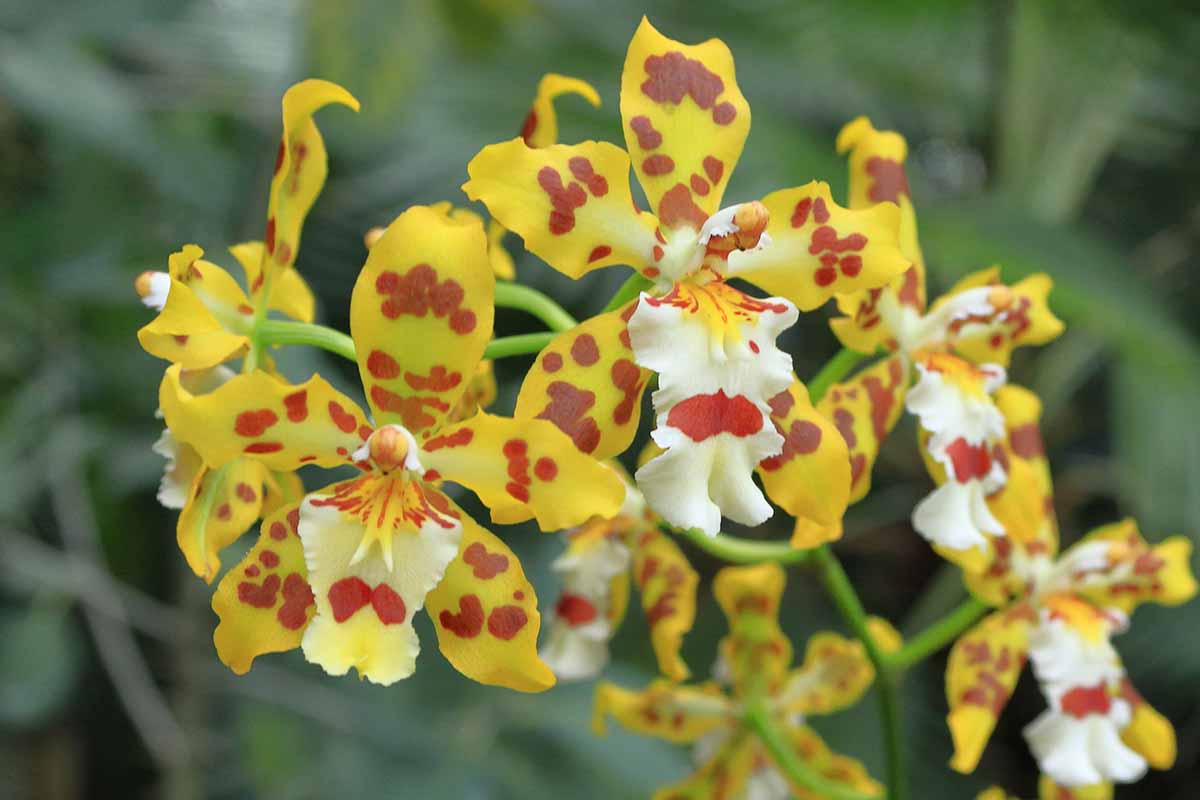
We link to vendors to help you find relevant products. If you buy from one of our links, we may earn a commission.
You could cultivate orchids successfully without knowing what pseudobulbs are, but understanding what purpose they serve and how to care for them will result in healthier, more robust plants.
If you’re new to these plants in general, you might want to read our beginner’s guide to growing orchids. Then, come back here, and we’ll dive in.
Coming up, we’re going to talk about what pseudobulbs are, what they do, the different types, and how to maintain them.
Here’s the lineup:
What You’ll Learn
To start, let’s figure out what the heck these things are.
What Is a Pseudobulb?
First of all, despite the “bulb” part of the name, these structures don’t grow underground. They are located above the soil and grow from rhizomes.

These aren’t true bulbs, as you might have guessed from the “pseudo” part of the name.
True bulbs are fleshy structures that grow underground and store all the components needed to complete the plant’s life cycle.
Pseudobulbs don’t do this. They only store water and nutrients, and don’t have the necessary elements like buds and shoots for growth, as we’ll discuss in a bit. They are actually modified, succulent stems that are larger than the typical orchid stem.
You can usually identify them by looking for a part of the stem that appears to be on steroids. It will be the larger section of the stem right above the soil at the base of the orchid.
Experts defined what differentiates a pseudobulb from a stem in the International Journal of Plant Sciences, Volume 181, Number 7.
Chrissy Y. Gobel in the Biology and Chemistry department at the University of Bremen, Boris O. Schlumpberger at Herrenhausen Garden, and Gerhard Zotz at Oldenburg University’s Institute of Biology and Environmental Science determined that all pseudobulbs are succulent and store more water than the stem.
The shape and size varies, they can be just slightly larger than the stem, or as big and round as a hen’s egg. They might be flat and oval or perfectly spherical.
Each fleshy modified stem is partially covered by a sheath, which is green when it’s young and turns brown as it ages.
Pseudobulbs appear in both epiphytic species (Cattleya, Miltonia, Oncidium) and terrestrial species (Cymbidium, Eulophia, Spathoglottis), though they’re more commonly found on terrestrial species.
Learn more about the different types of orchids in our guide.
These structures have a much shorter lifespan than the plant itself. They might die off and be replaced every few years.
What Purpose Do They Serve?
These structures store water that the plant can tap into during times of scarcity.
If you picture the environment where many orchids grow natively, they are generally characterized by times of abundance and times of drought.
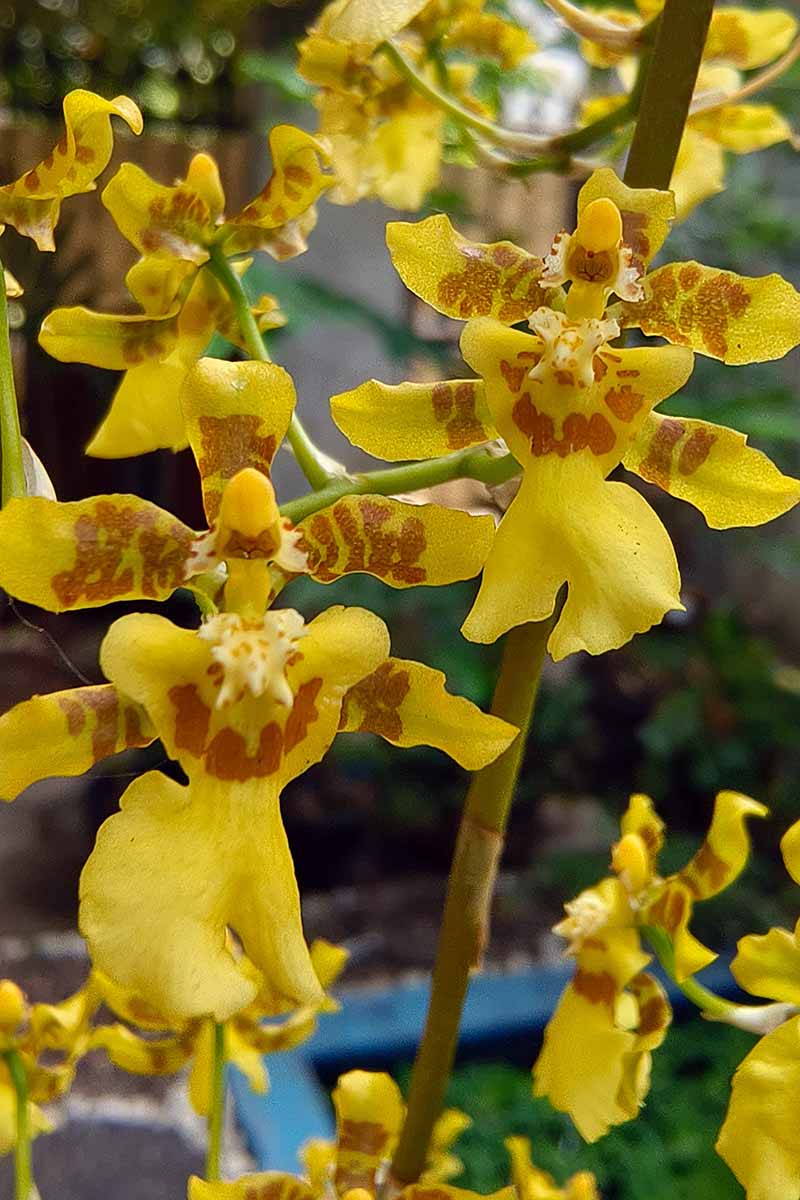
They also store minerals and photosynthesize. When a plant needs nitrogen, it can move it from the pseudobulb to the leaves, and vice versa.
Types of Pseudobulbs
There are two kinds of pseudobulbs: heteroblastic and homoblastic.
Heteroblastic types have one internode, and homoblastic kinds have two or more. Basically, “homoblastic” is a fancy way of saying that the pseudobulb is made up of one single segment, and “heteroblastic” means it is made up of two or more segments.

Among these, there are two types of pseudobulbs on each orchid: backbulbs and green bulbs. Backbulbs are those with no leaves, and green bulbs have leaves.
In other words, backbulbs are mature modified stems that have grown, aged, and lost their foliage. Remember, pseudobulbs don’t live as long as the plant, and they will mature and die in a few years.
Green bulbs are younger modified stems that haven’t fully matured and that still have leaves.
Problems and Maintenance
The pseudobulbs of many species, especially Oncidium, will wrinkle when deprived of water.
Sometimes providing them water will plump them back up again, and other times it won’t. Older growths will naturally wrinkle over time, so it’s not something you can avoid.
I know lots of people who see wrinkling as a sign that they’ve failed to care for their orchids. Try to see the wrinkling as all part of the process of growing orchids, because it’s likely to happen.
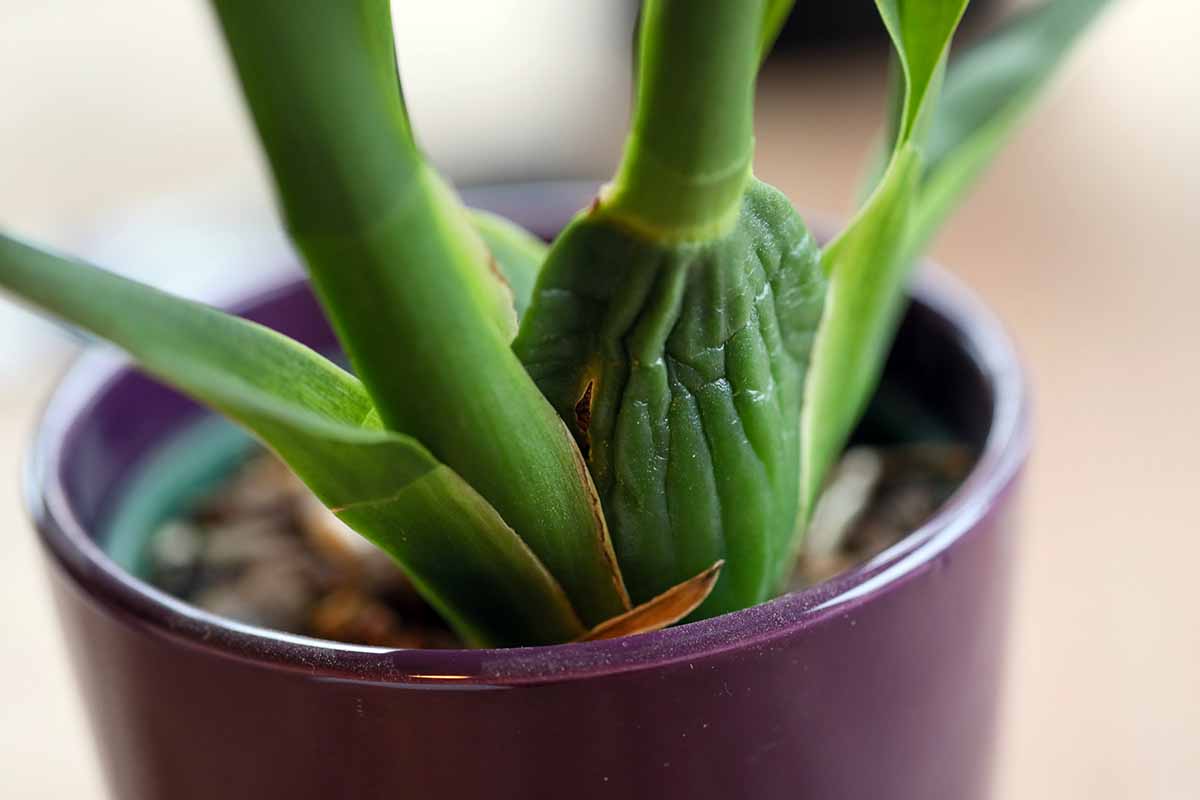
You are trying to raise a plant in an environment vastly different than the one it grows in naturally. There’s bound to be some stress for both you and the plant.
Stay on top of your watering, and don’t fret too much if wrinkles form.
If the pseudobulb appears to be turning brown, it’s likely that the protective sheath has become old and papery. This is a normal part of aging.
Remove the dead sheath because it provides a place for pests to hide, and it can trap moisture.
Wait until the sheath is totally brown and papery, and then peel it off with your fingers. You can also use a damp sponge or a washcloth to gently rub the sheath off.
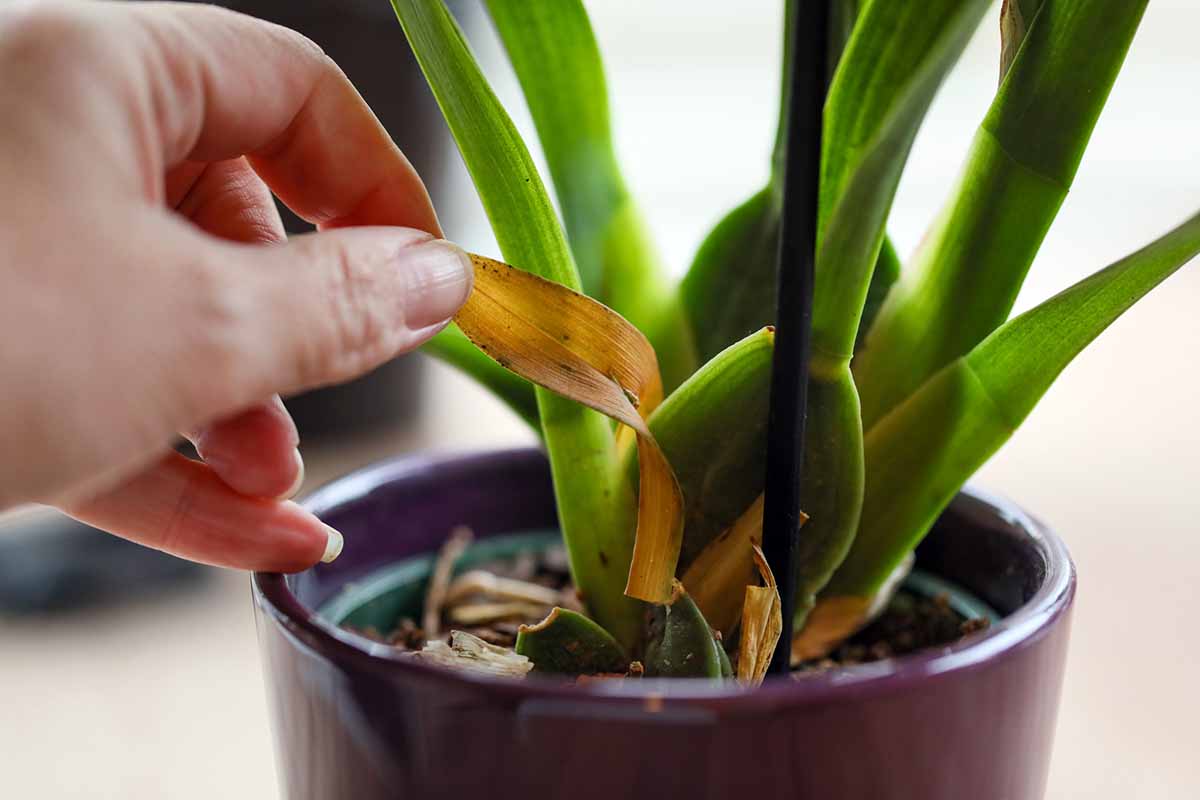
In rare instances, the pseudobulb itself might turn brown. If that’s the case, it’s likely that the roots are in too much water.
Remove the plant from its pot and brush away all of the substrate.
Clean out the container with a 10 percent bleach and water solution. Spray the roots with copper fungicide and then repot in fresh substrate.
Remove any dead backbulbs by cutting them off at the soil level or gently pulling them off the plant.
Finally, pseudobulbs can be propagated through a process called “striking.” Striking is the process of removing old backbulbs to encourage new growth.
Once they lose their leaves, remove the backbulbs by gently twisting them off of the plant.
You can then replant these in the same or a different pot by burying them two-thirds deep and watering them as usual. It can take up to six months for new growth in the form of leaf and flower stems to develop, so don’t give up if you don’t see growth right away.
“False” Bulbs Create Healthy Orchids
They may not be real bulbs, but they’re certainly an important part of an orchid’s anatomy.
Without them, the plants wouldn’t be able to access water and nutrients during times of scarcity. So next time you notice these funky little bulbs, thank them for keeping your orchid alive.
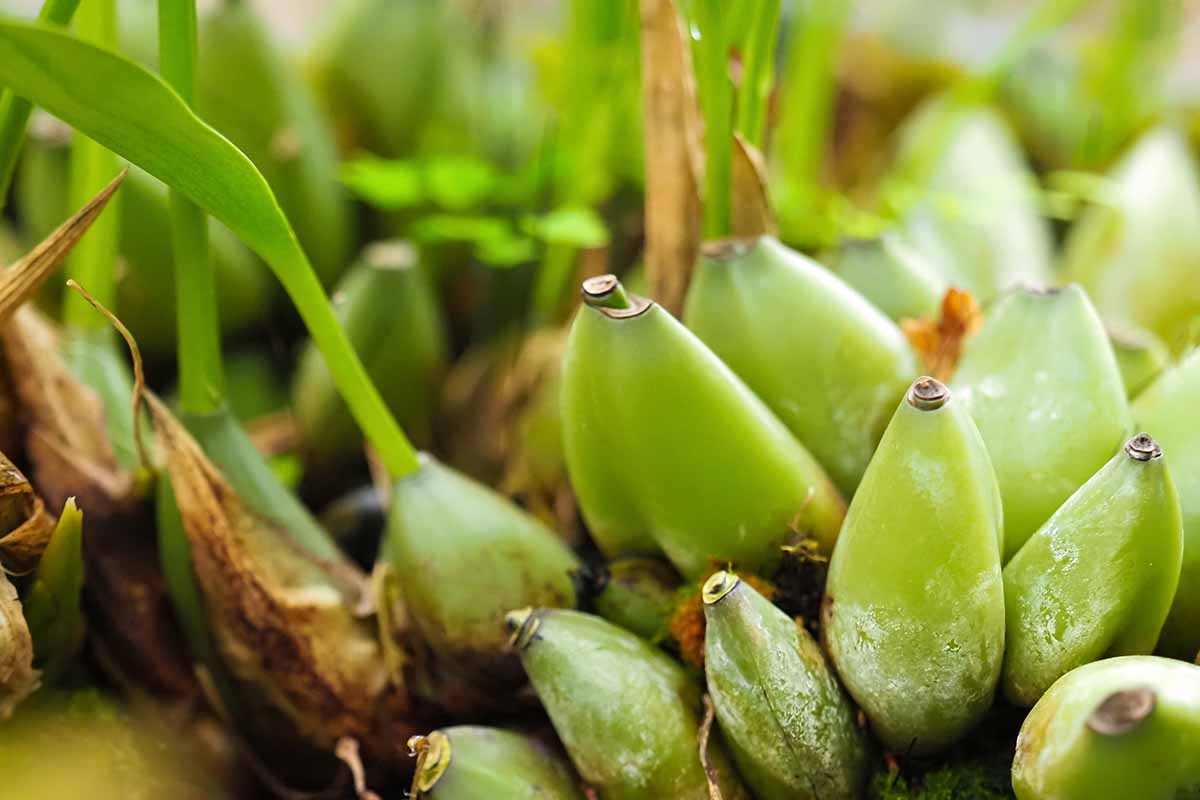
Which species are you growing? Are you running into any trouble? Let us know in the comments section below and we’ll do our best to help.
Orchids are unusual and interesting plants. If you’d like to learn more about them, we have a few guides that you might find helpful, including:

